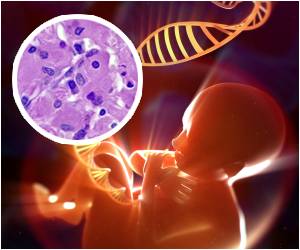The potential to replenish populations of cells destroyed by disease was seen as the main promise of regenerative medicine, when it came into existence more than three decades ago.

In a review article appearing today in the journal Science, University of Rochester Medical Center scientists Steve Goldman, M.D., Ph.D., Maiken Nedergaard, Ph.D., and Martha Windrem, Ph.D., contend that researchers are now on the threshold of human application of stem cell therapies for a class of neurological diseases known as myelin disorders – a long list of diseases that include conditions such as multiple sclerosis, white matter stroke, cerebral palsy, certain dementias, and rare but fatal childhood disorders called pediatric leukodystrophies.
"Stem cell biology has progressed in many ways over the last decade, and many potential opportunities for clinical translation have arisen," said Goldman. "In particular, for diseases of the central nervous system, which have proven difficult to treat because of the brain's great cellular complexity, we postulated that the simplest cell types might provide us the best opportunities for cell therapy."
The common factor in myelin disorders is a cell called the oligodendrocyte. These cells arise, or are created, by another cell found in the central nervous system called the glial progenitor cell. Both oligodendrocytes and their "sister cells" – called astrocytes – share this same parent and serve critical support functions in the central nervous systems.
Oligodendrocytes produce myelin, a fatty substance that insulates the fibrous connections between nerve cells that are responsible for transmitting signals throughout the body. When myelin-producing cells are lost or damaged in conditions such as multiple sclerosis and spinal cord injury, signals traveling between nerves are weakened or even lost. Astrocytes also play an essential role in the brain. Long overlooked and underappreciated, it is now understood that astrocytes are critical to the health and signaling function of oligodendrocytes as well as neurons.
Glial progenitor cells and their offspring represent a promising target for stem cell therapies, because – unlike other cells in the central nervous system – they are relatively homogeneous and more readily manipulated and transplanted. In the case of oligodendrocytes, multiple animal studies have shown that, once transplanted, these cells will disperse and begin to repair or "remyelinate" damaged areas.
Advertisement
Scientists have reached this point, according to the authors, because of a number of key advances. Better imaging technologies – namely advanced MRI scanners – now provide greater insight and clarity into the specific damage caused in the central nervous system by myelin disorders. These technologies also enable scientists to precisely follow the results of their work.
Advertisement
Nedergaard's lab has studied the integration of these cells into existing neural networks, and well as in imaging their structure and function in the adult nervous system. Together, the two labs have developed models of both human neural activity and disease based on animals transplanted with glial progenitor cells, which will enable human neural cells to be evaluated in the context of the live adult brain – as opposed to a test tube. This work has already opened new avenues in both modeling and potentially treating human glial disease.
All of these advances, contend the authors, have accelerated research to the point where human studies for myelin disorders are close at hand. For instance, diseases such as multiple sclerosis, which benefit from a new generation of stabilizing anti-inflammatory drugs, may be an especially appealing target for progenitor-based cell therapies which could repair the now permanent and untreatable damage to the central nervous system that occurs in the disease. Similarly, the authors point to a number of the childhood diseases of white matter that now appear ripe for cell-based treatment.
"We have developed a tremendous amount of information about these cells and how to produce them," said Goldman. "We understand the different cell populations, their genetic profiles, and how they behave in culture and in a variety of animal models. We also have better understanding of the disease target environments than ever before, and have the radiographic technologies to follow how patients do after transplantation. Moving into clinical trials for myelin disorders is really just a question of resources at this point."
Source-Eurekalert











